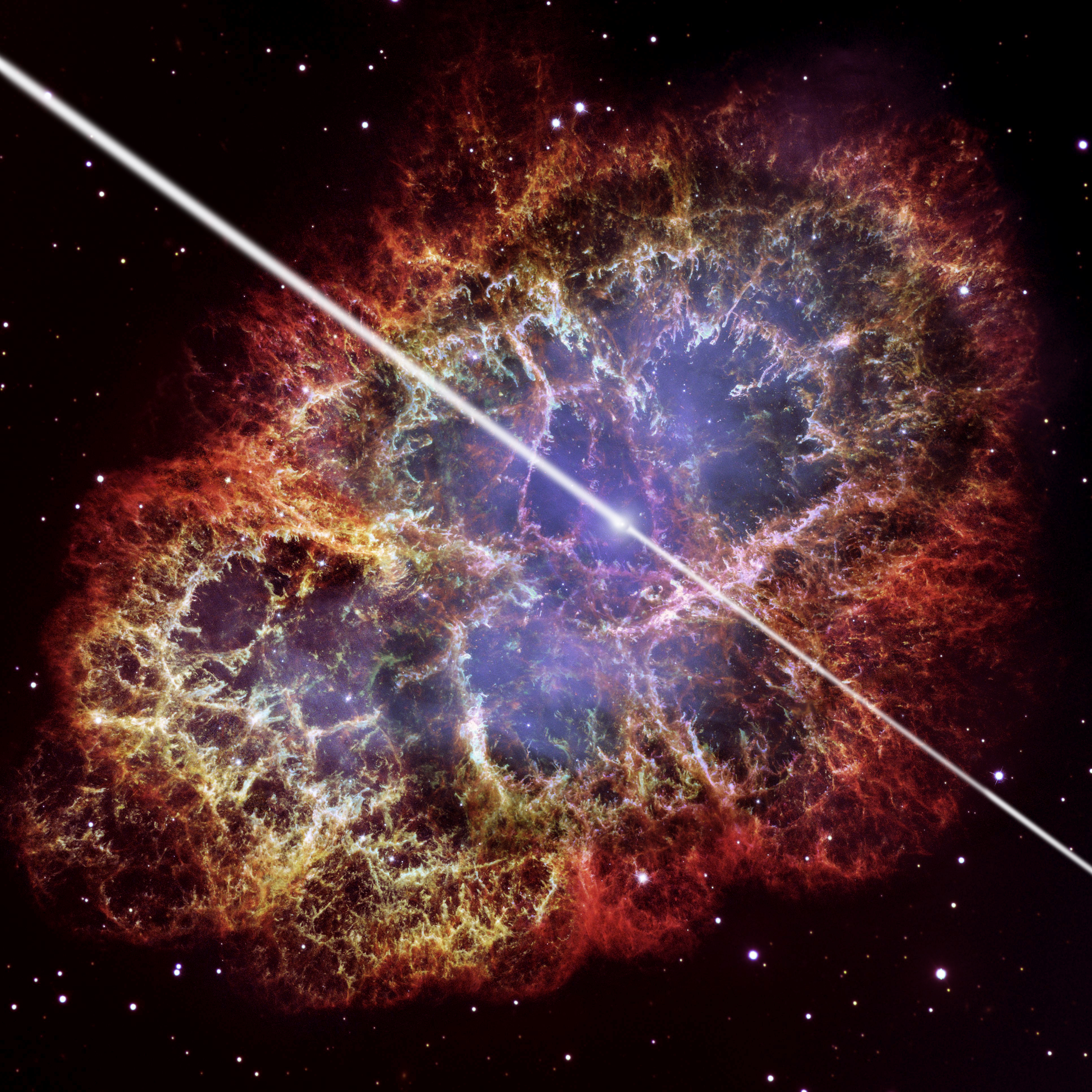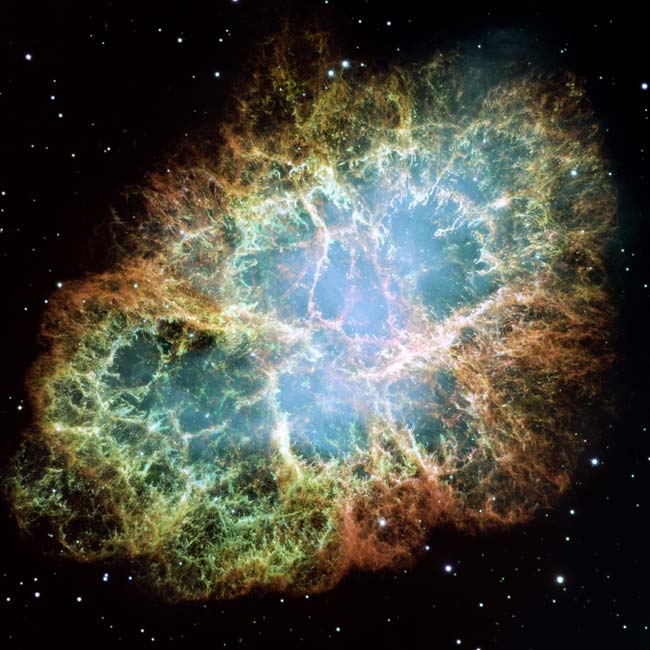'Jaw-Dropping!' Crab Nebula's Powerful Beams Shock Astronomers

When astronomers detected intense radiation pumping out of the Crab Nebula, one of the most studied objects in space, at higher energies than anyone thought possible, they were nothing short of stunned.
The inexplicably powerful gamma-rays came from the very heart of the Crab Nebula, where an extreme object called a pulsar resides.
"It was totally not expected — it was absolutely jaw-dropping," Andrew McCann, a Ph.D. candidate at McGill University in Montreal, Canada, and a co-author of the new study, told SPACE.com. "This is one of the hottest targets in the sky, so people have been looking at the Crab Nebula for a long time. Now there's a twist in the tale. High-energy rays coming from the nebula are well-known, but coming from the pulsar is something nobody expected."
Details of the study, which was led by Nepomuk Otte, a postdoctoral researcher at the University of California, Santa Cruz, are published in the Oct. 7 issue of the journal Science.
The Crab's mysteries
The photogenic Crab Nebula is really the wreckage of a long-dead star that emitted an explosion of light that reached Earth in the year 1054, and was seen and recorded by Chinese and Native American skygazers. The dying star was located 6,500 light-years away from Earth in the constellation Taurus when it erupted in a brilliant supernova explosion. [50 Fabulous Deep-Space Nebula Photos]
At the heart of the nebula's colorful layers of gas is a so-called pulsar, which is the remains of the original star's core that collapsed in on itself into a super-dense, spinning neutron star. The Crab pulsar spins 30 times a second and is so dense that it has a greater mass than the sun.
Breaking space news, the latest updates on rocket launches, skywatching events and more!
A pulsar emits a continuous beam of radiation that sweeps around like a lighthouse, but appears to pulse when it is viewed through ground-based telescopes.
The gamma-ray beams that were detected from the Crab pulsar exceeded 100 billion electron-volts, stronger than anyone or any theories projected — a million times more energetic than medical X-rays and 100 billion times stronger than visible light, the researchers said.
"If you asked theorists a year ago whether we would see gamma-ray pulses this energetic, almost all of them would have said, 'No,'" study co-author Martin Schroedter, of the Harvard-Smithsonian Center for Astrophysics in Cambridge, Mass., said in a statement. "There's just no theory that can account for what we've found.
In fact, the findings were so unlikely that some researchers told Otte that he was crazy to look for such highly energetic emissions from the pulsar.
"It turns out that being persistent and stubborn helps," Otte said in a statement.
Shaking up the field
These new details of the Crab pulsar could change scientists' understanding of gamma-ray emissions and how they are generated, Otte added. [Top 10 Strangest Things in Space]
"We thought we understood the gamma-ray emission, and this was really becoming a foundational feature of our models, but that's now thrown out," McCann explained. "The reason why this is so exciting is that it's turning things around in the field."
The gamma-ray beams from the Crab pulsar were detected by the Very Energetic Radiation Imaging Telescope Array System (VERITAS), which is located at the Smithsonian's Whipple Observatory, just south of Tucson, Ariz.
Possible explanations for the Crab pulsar's intense beams have been suggested, but the researchers said that plenty more data will need to be collected before the mechanisms behind these gamma-ray pulses can be better understood.
Scientists also expect to refine their observations once VERITAS undergoes an upgrade in the summer of 2012 to make its instruments more sensitive, McCann said. Other planned next-generation observatories — such as the Cherenkov Telescope Array (CTA), a project to build a very high-energy gamma-ray instrument — should also further this research.
"It's much more long term, but once CTA comes on, it's really going to write the book on this," McCann said.
VERITAS, which began collecting full-scale observations in 2007, is used to examine the remains of exploded stars, distant galaxies, powerful gamma-ray bursts, and to search for evidence of mysterious dark matter particles.
You can follow SPACE.com staff writer Denise Chow on Twitter @denisechow. Follow SPACE.com for the latest in space science and exploration news on Twitter @Spacedotcom and on Facebook.

Denise Chow is a former Space.com staff writer who then worked as assistant managing editor at Live Science before moving to NBC News as a science reporter, where she focuses on general science and climate change. She spent two years with Space.com, writing about rocket launches and covering NASA's final three space shuttle missions, before joining the Live Science team in 2013. A Canadian transplant, Denise has a bachelor's degree from the University of Toronto, and a master's degree in journalism from New York University. At NBC News, Denise covers general science and climate change.

